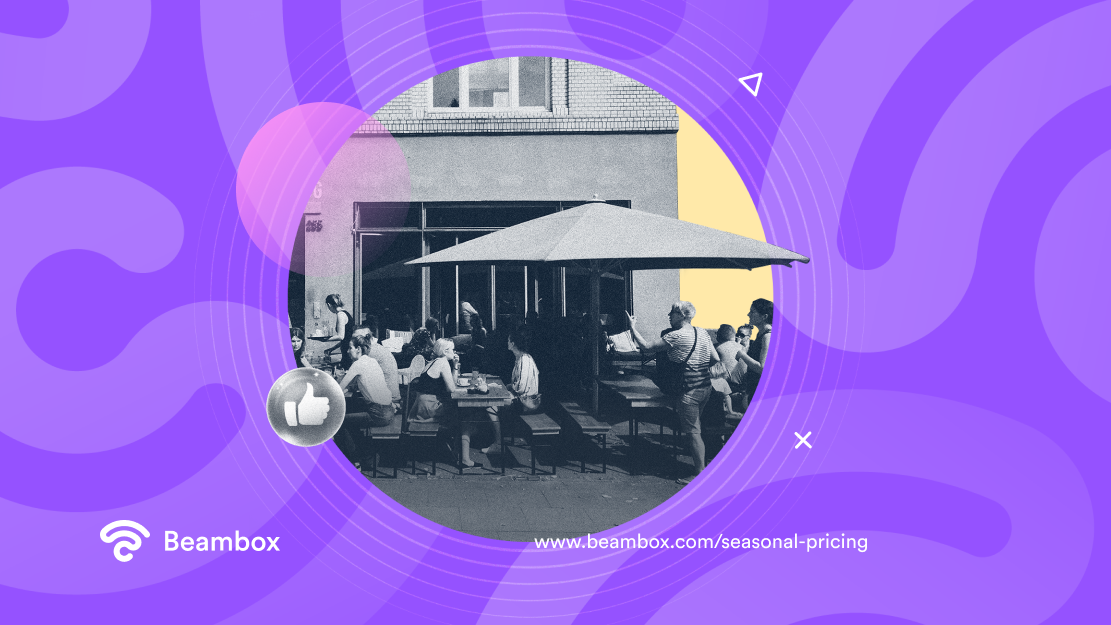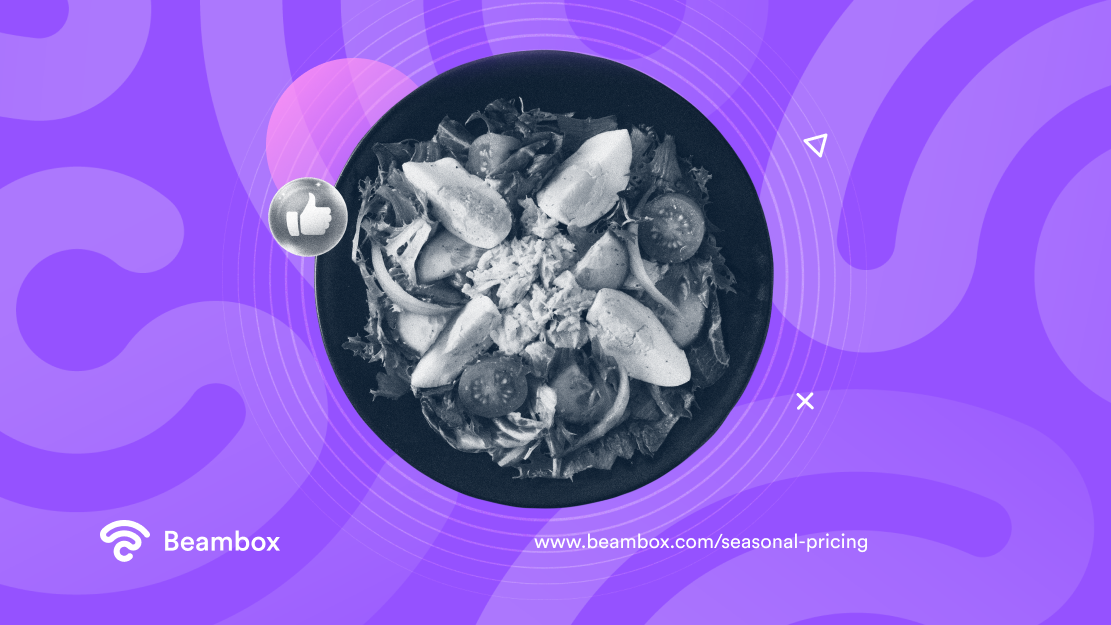Seasonal Pricing for Restaurants: Examples and Strategies That Work
Although seasonal pricing is mostly known for its use in the lodging and traveling industry, it can bring benefits to any business in the hospitality industry.
As seasonal pricing allows business owners to adapt their pricing to the market demand, it typically leads to a larger profit margin at the end of the year.
However, pricing strategies can also be used to attract new customers and grow customer loyalty.
This article shows how to use seasonal pricing in the restaurant industry, and provides examples of successful strategies to make your prices a tool for growing your business.
It’s far easier than you think, and within minutes, you’ll find yourself tailoring a pricing strategy that works perfectly for your business and its audience. But first, let’s tick off the basics.
What Is Seasonal Pricing?
Are you wondering what is meant by seasonal pricing?
Seasonal pricing does what it says on the tin. Put simply, it’s a way of flexing your pricing depending on demand during specific times of the year.
Price adjustments can be made to make hospitality businesses more attractive to a larger pool of guests during specific periods of the year.
Moreover, increasing pricing seasonally allows for building a sense of scarcity and exclusivity that respond to peak demand times and attract the most profitable customers.
Therefore, a seasonal price can be seen as a versatile tool at business owners’ disposal.
How To Get Started With Seasonal Pricing
Whether you own a restaurant, a cafe, or any other type of business in the food industry, seasonal pricing might radically alter the profitability of your venture.

In fact, seasonal pricing strategies allow you to adjust your offer according to the demand in your area and you might see the profitability of your restaurant going up during peak seasons.
However, by applying some clever pricing strategies, you might set up offers that attract potential customers in your area even when it is not peak season.
To get started with seasonal pricing you need to work around two aspects of your business: Key seasons and Ideal rates.
Let’s dive into these two fundamental pieces of information.
Key Seasons and Ideal Rates
Key seasons define the demand period of the year. To get started with seasonal pricing, you need to know where your key seasons sit within the calendar year.
To map your key seasons out, note down the following:
- Peak season (where demand is at its highest)
- Off-season (where demand is at its lowest)
- Shoulder season (the periods that precede and follow your peak season)
This task is made easier if you can look back at the last three years or so. Your key seasons will become immediately evident.
Once you know your key seasons, you know which are the busiest period of the year and you can prepare accordingly.
After you know your key seasons, you need to define your ideal rates.
For seasonal pricing to work effectively, you need to have a base and ceiling from which to work - and to work towards.
In fact, during low-demand times, the best pricing strategies will appeal to new customers through bundling and fixed-price offerings.
A method to define this number might be to ask yourself what is a fair price for a meal at your venue. Alternatively, you can do some math and calculate a fair number.
This number is not set in stone but gives you a perimeter where you can create offers without ending up with a loss.
A Lesson on Seasonal Pricing by Airbnb
Seasonal pricing is a tactic that the hospitality industry has used for many years, and these days, the results of these strategies are leveraged mostly by online travel agencies (OTAs) and lodging companies.
A lesson on seasonal pricing comes from Airbnb.
Airbnb’s hosts are advised to consider 4 approaches to customize their pricing:
- Smart Pricing: An automation that changes the price depending on the demand
- Weekend pricing: Prices customized for Friday and Saturday
- Long-term pricing: Discounts on longer stays
- Rule-set pricing: Greater price customization defined by the host
Airbnb’s hosts leverage seasonal pricing to increase occupancy throughout the whole year.
Ultimately, such strategies help hosts stay profitable during low-demand times and get higher profits during peak seasons.
Airbnb’s seasonal pricing is no different from what restaurants and other businesses should do; Adapting the offer to demand’s seasonality.
However, while an Airbnb host mostly needs to change the rate on a dashboard, a restaurant owner has to be more creative and attentive.
In fact, there are no algorithms that can take care of your business.
Seasonal Pricing Strategies for Restaurants
While seasonal pricing is largely used in the hotel industry, restaurants can also take advantage of seasonal prices to increase their profit margin and stay competitive in their market.

However, as a business owner, you need to pick the strategies that best suit your business and your location.
While changing the menu’s prices can make sense for a restaurant in a busy tourist area, the same does not apply to a restaurant that is mostly attended by locals.
Therefore, consider the pros and cons of every initiative.
The seasonal pricing strategies mentioned below allow your restaurant to:
- Stand out head and shoulders above the competition
- Increase occupancy during typically quiet days of the week
- Maximize the profitability of your venue throughout the year
Most importantly, seasonal pricing will open up your business to a much bigger pool of potential guests, and that gives you the opportunity to create new loyal customers.
Seasonal Pricing for Restaurants: Deals and Flash Offers
Offers and discounts typically attract customers to any business in any sector. Restaurants and cafes are no exception.
In the hospitality industry, deals and flash offers are typically used as a method to grow customer loyalty. However, they are versatile enough to be used in the context of seasonal pricing.
Creating unique discount offers on various days of the week or during low-demand times will incentivize potential customers to discover your venue.
The best moment to set up these types of deals is during low-demand periods. In other words, when you know that the restaurant is less likely to be busy.
However, make sure to define how long the deal lasts and what restrictions apply.
Seasonal Pricing for Restaurants: Discounted Sections
To win new customers during low-demand times, you can heavily discount specific sections of your menu or specific items.
This seasonal pricing strategy aims to attract new customers with discounted items that will be the baits. Then, when your customers are already buying something, you will offer other items at their regular price.

The items that suit this strategy well, are those that are rarely eaten as an entire meal. For example, sides or soups. Alternatively, you can apply heavy discounts on kids’ menus, aiming to attract entire families looking for a bargain.
Another option would be to offer specific items (typically the salty ones) and then sell drinks at their normal price.
An example? 50% discounts on french fries when you order 1 beer.
The possibilities are endless. What counts here is what your restaurant can offer and who are the customers you are trying to attract.
Find an item that is appealing enough to attract customers and you are halfway to selling more.
Seasonal Pricing During Festivities and Events
Another awesome seasonal pricing strategy for restaurants is to create prepackaged offers that target festivities or local events.
While changing the menu (and its prices) is not viable for most restaurants, creating tailored offers or menus for a particular event during the year is doable for any restaurant.
These are dates that, just like the ‘big’ seasons, are ripe for price flexing, based on demand. Note down all of the events and seasonal events which pertain to your local area (or which will be important to your ideal guest).
Think about local events, too.
They don’t have to be big, either; a small sporting event or local town festival might be enough to demand a different pricing strategy whilst footfall in the area is a little higher than normal.
Here are some examples:
- Saint Patrick’s Day (March 17)
- National Pasta Day (October 17)
- Halloween (October 31)
- National Sandwich Day (November 3)
- National Nachos Day (November 6)
- National Cake Day (November 26)
- New Year’s Eve (December 31)
The hardest part of this strategy is to know the events and festivities you want to target in advance, so you can plan efficiently and create an offer that makes sense.
Check what is going on in your town and prepare a prepackaged offer that targets the event’s audience. Then promote it through your restaurant’s marketing channels.
However, always check that the venue has a good margin on the food and drink so you’re not paying over the odds.
Seasonal Pricing for Restaurants: How About a Seasonal Menu?

Most scientists agree that humans should eat food depending on their seasonality.
In other words, is not recommendable to eat bananas or tomatoes all year round. They should be eaten only in their season.
This is great news for business owners in the restaurant industry.
In fact, seasonal food provides you with a great opportunity to change your menu and use seasonal pricing in its most natural version.
The core of this strategy is to restructure your menu depending on the foods that are naturally growing in that season and, possibly, in your area.
Although it requires some research on your side to find the best suppliers and remake the menu, it allows you to rethink your pricing and thus the potential revenue coming from your core products.
However, you don’t need to change any single item in your menu. It would be crazy to remove popular items just because their ingredients are imported and not available in your area.
When properly crafted and promoted, seasonal menus offer multiple benefits for your restaurant.
Seasonal menus allow you to attract new guests while offering fresher and more nutritious food to your loyal customers.
You might increase the profit margin of your restaurant as well as its perceived quality. Additionally, you might convince potential customers to try out your restaurant for the first time.
Seasonal Pricing Examples
The strategies mentioned above are already used by many restaurants throughout the world of any size.
Here you have some seasonal pricing examples, based on the strategies mentioned above
- During the popular London Marathon, restaurants in London compete to create their tailored offers.
- A seasonal menu is a fantastic seasonal pricing opportunity for any restaurant. Get inspired by checking eeetwell menus.
- Tricks or Treat? McDonald’s to bring back their Halloween Buckets.
- 2-for-1 offers can incentivize people to try out your venue during the low season. Check this example of a 2-for-1 offer at slugandlettuce
- Pellegrino Brothers restaurant offers several types of Gift Cards to fill their restaurant throughout the year.
All in all, with some creativity and will, you can adapt your offer to your area’s opportunities and demands.
However, your seasonal pricing offer, like anything else in your restaurant, should match your customer’s expectations and needs.
The best way to learn about your customers is through WiFi marketing, an innovative type of marketing that allows business owners to collect data about their customers, measure their results, and redirect their marketing efforts.
The great advantage of WiFi marketing is that it requires something you are already offering (WiFi). Moreover, you will target customers that are already choosing your venue.
Beambox is an all-in-one WiFi marketing solution that allows you to connect, capture, and learn more about your customers and their preferences.
There are over 12,000 venues that are taking advantage of Beambox to grow their business. Start your Beambox 30-day free trial today.
Get Started With Free WiFi Marketing
Beambox helps businesses like yours grow with data capture, marketing automation and reputation management.
Sign up for 30 days free


